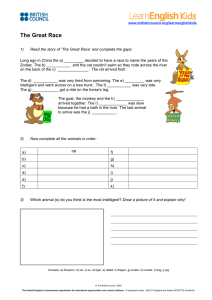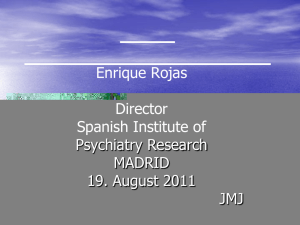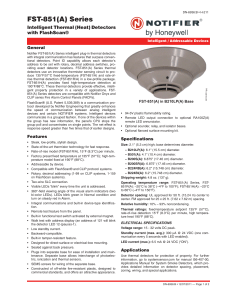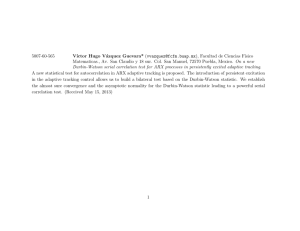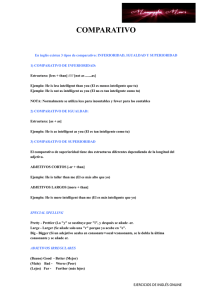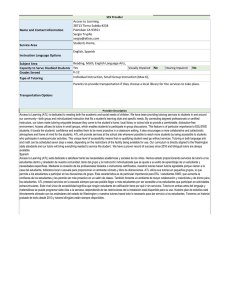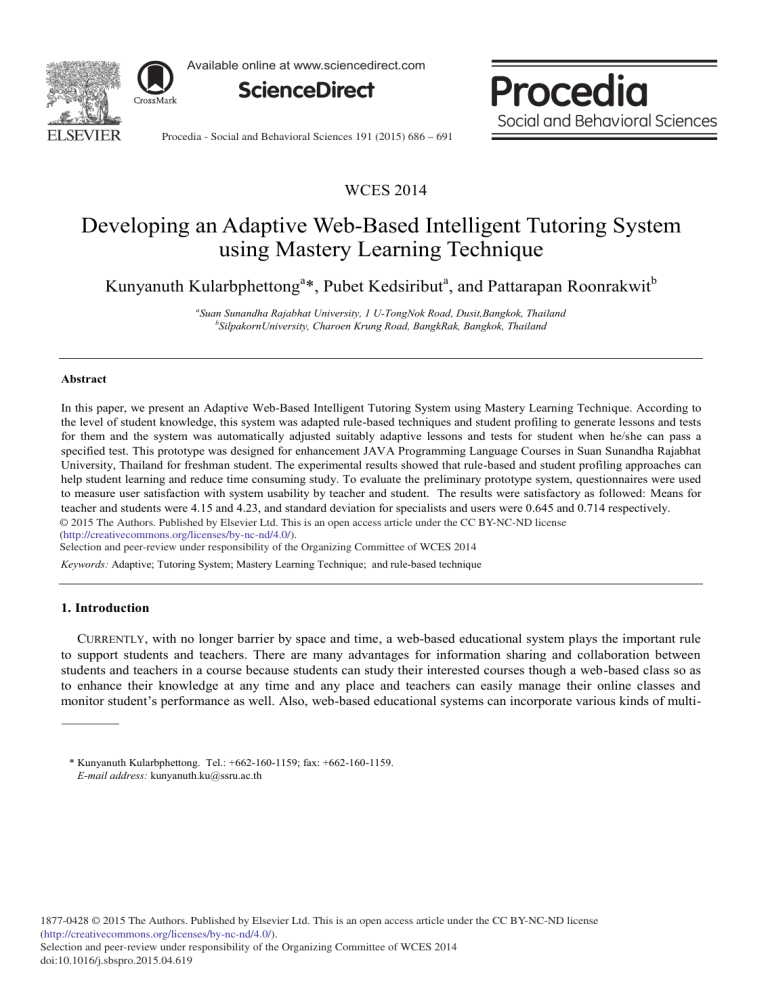
Available online at www.sciencedirect.com ScienceDirect Procedia - Social and Behavioral Sciences 191 (2015) 686 – 691 WCES 2014 Developing an Adaptive Web-Based Intelligent Tutoring System using Mastery Learning Technique Kunyanuth Kularbphettonga*, Pubet Kedsiributa, and Pattarapan Roonrakwitb a Suan Sunandha Rajabhat University, 1 U-TongNok Road, Dusit,Bangkok, Thailand b SilpakornUniversity, Charoen Krung Road, BangkRak, Bangkok, Thailand Abstract In this paper, we present an Adaptive Web-Based Intelligent Tutoring System using Mastery Learning Technique. According to the level of student knowledge, this system was adapted rule-based techniques and student profiling to generate lessons and tests for them and the system was automatically adjusted suitably adaptive lessons and tests for student when he/she can pass a specified test. This prototype was designed for enhancement JAVA Programming Language Courses in Suan Sunandha Rajabhat University, Thailand for freshman student. The experimental results showed that rule-based and student profiling approaches can help student learning and reduce time consuming study. To evaluate the preliminary prototype system, questionnaires were used to measure user satisfaction with system usability by teacher and student. The results were satisfactory as followed: Means for teacher and students were 4.15 and 4.23, and standard deviation for specialists and users were 0.645 and 0.714 respectively. © 2015 2014The TheAuthors. Authors. Published by Elsevier © Published by Elsevier Ltd. Ltd. This is an open access article under the CC BY-NC-ND license (http://creativecommons.org/licenses/by-nc-nd/4.0/). Selection and peer-review under responsibility of the Organizing Committee of WCES 2014. Selection and peer-review under responsibility of the Organizing Committee of WCES 2014 Keywords: Adaptive; Tutoring System; Mastery Learning Technique; and rule-based technique 1. Introduction CURRENTLY, with no longer barrier by space and time, a web-based educational system plays the important rule to support students and teachers. There are many advantages for information sharing and collaboration between students and teachers in a course because students can study their interested courses though a web-based class so as to enhance their knowledge at any time and any place and teachers can easily manage their online classes and monitor student’s performance as well. Also, web-based educational systems can incorporate various kinds of multi- * Kunyanuth Kularbphettong. Tel.: +662-160-1159; fax: +662-160-1159. E-mail address: kunyanuth.ku@ssru.ac.th 1877-0428 © 2015 The Authors. Published by Elsevier Ltd. This is an open access article under the CC BY-NC-ND license (http://creativecommons.org/licenses/by-nc-nd/4.0/). Selection and peer-review under responsibility of the Organizing Committee of WCES 2014 doi:10.1016/j.sbspro.2015.04.619 Kunyanuth Kularbphettong et al. / Procedia - Social and Behavioral Sciences 191 (2015) 686 – 691 687 media and interactive components like audio, animation, video, and etc. However, most web-based educational courses can rarely support interactive and adaptive abilities. Intelligent tutoring systems (ITS) are computer programs that are widely implemented so as to support and customized classes automatically without intervention from a human teacher (Psotka, & Sharon Mutter, 1988). During the rapid grown of the web technology, Web Intelligence is a promising channel of Artificial Intelligent issues and there are many ITS applications which are developed and applied to use in various educational level. Also, Type-2 fuzzy logic was applied to develop a webbased intelligent tutoring system for teaching in a basic control course (Francesco, Pignato, Piccolo, Nicolosi, Schembri and Lipoma, 2010). Moreover, a web based learning system, ActiveMath, was adapted in Mathematics to enhance long distance learning (Melis & Siekmann, 2004). And Mastery learning is termed by Benjamin Bloom. It was based on differentiated and individualized practices, progress monitoring, assessment, and feedback to improve the process of classroom practice (Bloom, Mastery learning¸ 1971; Zimmerman & Dibenedetto, 2008). Therefore, the purpose of this research aims to develop an Adaptive Web-Based Intelligent Tutoring System using Mastery Learning Technique to support students in learning computer programming courses in case of Suan Sunandha Rajabhat University. Rule based approach and student information were conducted in this project to classify and suggest student’s learning. Moreover, it is also beneficial to apply this model to different courses. The remainder of this paper is organized as follows. Section 2 presents related works and research methodologies used in this work. Section 3 we describe the system architecture based on the purposed model and section 4 shows the results of this experiment. Finally, the conclusion and future research are presented in section 5. 2. Related Works and Research Methodologies In this section, we illustrate related works and specified methodologies used in this project. 2.1. Related Works A literature search shows that most of the related researchers have developed Adaptive Web-Based Intelligent Tutoring Systems to support learners in different courses by following this: According to Butz, Hua, and Maguire (2006) a Web-based intelligent tutoring system, called BITS, was implemented by using a Bayesian network approach to support students in learning computer programming at the University of Regina. E-TCL (an Expert tutoring system for teaching computer programming languages) can support teachers so as to cooperate computer programming language courses together and use agent approach in the project (El-Khouly, Far, and Koono, 2000). Sykes and Franek (2003) presented “JavaTM Intelligent Tutoring System” (JITS) which was designed for students in their first programming course in JavaTM at the College and University level. There are many models of a webbased intelligent tutoring system which are purposed and implemented. The most of related research works concentrate on student’s learning knowledge than enhance and analyze student’s cognition. Hence, this research was adapted mastery technique with this system. 2.2. Research Methodologies Intelligent Tutoring Systems (ITS) are computer programs to solve learning problem, monitor, coach, and consult learners (Sleeman & Brown, 1982). ITSs include mainly four principal components: the domain model, the student model, the tutoring model and the user interface model. The domain model is based on ACT-R theory which assumes the fundamental theory of distinction between declarative and procedural knowledge. This model is tried to solve a problem and acts as a source of expert knowledge of ITS. The student model is the main component of ITSs and it consists of the cognitive, motivational and other affective states that effect to performance of student’s learning (Pavli, Brawner, Olney & Mitrovic, 2013). The tutor model cooperates between the domain and student model to mange tutoring strategies and actions. And the user interface model acts to integrate information of three components: knowledge about patterns of interpretation and action within dialogues; domain knowledge for communicating content and knowledge needed for communicating intent. Mastery learning was introduced in 1960’s and 1970’s and it consists of three significant characteristics: the use of tutor; the unit-perfection requirement 688 Kunyanuth Kularbphettong et al. / Procedia - Social and Behavioral Sciences 191 (2015) 686 – 691 and the self-paced feature (Green, 2000). Mastery learning can enhance learner’s proficiency and encourage positive attitudes in learning (Guskey, 2007) According to Jon Bergmann and Sams, the mastery model is used technology to pace the student’s learning (Bergmann & Sams, 2012). In the mastery learning technique, teacher defined the objectives of student’s learning with carefully and plans the learning strategies for each student and student need to demonstrate their understand the purpose and criteria of learning and regulations. If they achieve the referenced objectives, they can move on next works. Otherwise, they need to learn and complete a topic until they succeed. Therefore, teachers need to monitor the progress of learners by collecting student’s learning data so as to plan next instruction. Mastery learning is a pattern of teaching so that teachers can be used and adapted in their class. To assess in mastery learning technique, cognitive diagnostic, formative and summative assessment are used to evaluate in the mastery learning classroom. Cognitive diagnostic assessment is evaluated to find the causes and weaknesses of students and formative assessment is used to evaluate during the learning process. And summative assessment is evaluated at the end of the course. 3. System Architecture The architecture of the system consists of 4 parts: the User Interface part, the Student part, the Tutor part and the intelligent part, as shown in Fig.1. Fig. 1 the system architecture In the user interface part is consisted of two main functions: providing information to users and displaying diagnostic information. It receives input from the user and sends the information to the related parts for processing. The Student part, student can register his/her profile, such as personnel information, email address, username and password, and etc., and he/she is assigned to take pre-test so as to initialize the student profile. According to Chakraborty, Roy and Basu (2010), this project was used two aspects to measure the cognitive state of a student: Comprehension–ability and Problem-solving skill. The Tutor part allows teachers to set and determine teaching objectives and strategies. Besides, it allows teachers to indicate pre-test, post-test and tutorial. Pre-test includes the groups of questions to assess prerequisite student’s knowledge. Post-test is evaluated the effectiveness of student’s knowledge after learning related tutorial. The intelligent part interacts with students and teachers in pedagogy view and teaching strategies. It determines student’s individual characteristics and learning styles based on the result score of pre-test. After that the system evaluates his/her comprehensive by the result score of post-test. And Fig 2 was shown the system framework. Kunyanuth Kularbphettong et al. / Procedia - Social and Behavioral Sciences 191 (2015) 686 – 691 689 Fig. 2 Framework of the system 4. Experimental Results In this section, experimental results were separated to 2 parts: developing the Adaptive Web-Based Intelligent Tutoring System and evaluating the performance and satisfaction of the application. 4.1. Developing the Adaptive Web-Based Intelligent Tutoring System The system was evaluated by freshman students in Java Programming course at Suan Sunandha Rajabhat University. This study took places in 2 classes with 45 students and 22 students. The experimental results showed that the project can help student learning and reduce time consuming study. To evaluate the preliminary prototype system, questionnaires were used to measure user satisfaction with system usability by teacher and student in the following issues: the usability of user interface, the comprehensive of the system’s content, and user satisfaction in overall system. The results were satisfactory as followed: Means for teacher and students were 4.15 and 4.23, and standard deviation for specialists and users were 0.645 and 0.714 respectively. 4.2. Developing the Adaptive Web-Based Intelligent Tutoring System To test and evaluate the qualities of the system, Black box Testing and Questionnaires by teachers and students were used to test this application. Black Box testing was assessed in the error of the project as following: functional requirement test, Function test, Usability test, Performance test and Security test. The ability of this application was evaluated by Functional Requirement test in needs of the users and Functional test was used to evaluate the accuracy of the system. Usability test was tested the suitability of the system. Performance test was used the processing speed of the system. Finally, Security test was evaluated the security of the system and Table 1 and Fig 3 were shown the results of Black box testing. 690 Kunyanuth Kularbphettong et al. / Procedia - Social and Behavioral Sciences 191 (2015) 686 – 691 TABLE 1 The results of Black box testing Teachers SD ݔҧ 1.Function Requirement Test 3.71 0.665 2. Functional Test 3.96 0.416 3. Usability Test 4.23 0.61 4. Performance Test 4.02 0.43 5. Security Test 4.15 0.61 Summary 4.05 0.563 Students SD ݔҧ 4.12 0.718 3.71 0.665 3.97 0.645 3.98 0.542 4.06 0.659 3.97 0.644 4,4 4,2 4 Teachers 3,8 Students 3,6 3,4 1.Function 2. Functional Test 3. Usability Test Requirement Test 4. Performance Test 5. Security Test Fig. 3 the results of Black box testing Means for teachers and students were 4.05 and 3.97, and standard deviation for teachers and students were 0.563 and 0.644 respectively. 5. Conclusion and Future Works In this paper, we presents the preliminary result showing a promising progress in this prototypes model for the ongoing improvement of an Adaptive Web-Based Intelligent Tutoring System and also this system can be beneficial to use in different courses so that students can enhance and improve their programming ability and also this system supports teachers in handle and manage their programming course. However, in term of the future experiments, we are looking forward to research about other techniques to enhance this project. Acknowledgements The authors gratefully acknowledge the financial subsidy provided by Suan Sunandha Rajabhat University. References Bloom, B. S., (1971). Mastery learning. In J. H. Block (Ed.), Mastery learning: Theory and practice. Rinehart & Winston, New York, pp. 47–63. C.J.Butz, S.Hua, R.B.Maguire., (2006). A web-based bayesian intelligent tutoring system for computer programming, Web Intelligence and Agent Systems Volume 4 Issue 1, January, pp. 77-97. E. R. Sykes and F. Franek., (2003). A prototype for an Intelligent Tutoring System for students learning to program in Java, Proceedings of CATE 2003, IASTED International Conference on Computers and Advanced Technology in Education, June 30 - July 2, Rhodes, Greece, pp. 78-83 El-Khouly, M.M., Far, B.H., Koono, Z., (2000). Expert tutoring system for teaching computer programming languages, Expert Systems with Applications, 18, pp. 27–32. Francesco Sgrò, Pietro Mango, Salvatore Pignato, Alessandra Lo Piccolo, Simona Nicolosi, Rosaria Schembri, Mario Lipoma., (2010). A NeuroFuzzy Approach for student module of Physical Activity ITS., Procedia - Social and Behavioral Sciences, Volume 9, pp. 189–193. Green, R.A., Mastery Learning with the MATLAB Webserver, Proceedings of the 2000 American Society for Engineering Education. Washington, D.C.: American Society for Engineering Education. Kunyanuth Kularbphettong et al. / Procedia - Social and Behavioral Sciences 191 (2015) 686 – 691 691 Guskey, T. R., (2007). Closing achievement gaps: Revisiting Benjamin S. Bloom's “learning for mastery.” Journal of Advanced Academics, 19(1), pp. 8-31. Jonajan Bergmann and Aaron Sams., (2012). Flip Your Classroom: Reach Every Student in Every Class Every Day, ISTE ISBN 1564843157. Joseph Psotka, Sharon A. Mutter, (1988). Intelligent Tutoring Systems: Lessons Learned. Lawrence Erlbaum Associates, ISBN 0-8058-0192-8. Melis, E., & Siekmann, J., Activemath: An Intel- ligent Tutoring System for Mathematics. 7th International Conference "Artificial Intelligence and Soft Computing" (ICAISC) Lecture Notes in AI LNAI, 2994, 3070. Springer-Verlag pp.91-101. Philip I. Pavlik Jr, Keith W.Brawner, Andrew Olney, and Antonija Mitrovic, (2013). A Review of Learner Models Used in Intelligent Tutoring Systems, Publisher: Army Research Labs/ University of Memphis, January Chapter 5,pp.39-68. Sleeman, D.H and Brown J.S., (1982).Intelligent Tutoring Systems: an overview, New York: Academic Press, pp. 283-308. Sunandan Chakraborty, Devshri Roy, Anupam Basu , (2010).Development of Knowledge Based Intelligent Tutoring System, Advanced Knowledge Based Systems: Model, Applications & Research (Eds. Sajja & Akerkar), Vol. 1, pp 74 – 100. Zimmerman, B. J., & Dibenedetto, M. K.,(2008). Mastery learning and assessment: Implications for students and teachers in an era of high-stakes testing. Psychology in the Schools, 45(3), pp. 206-216.
